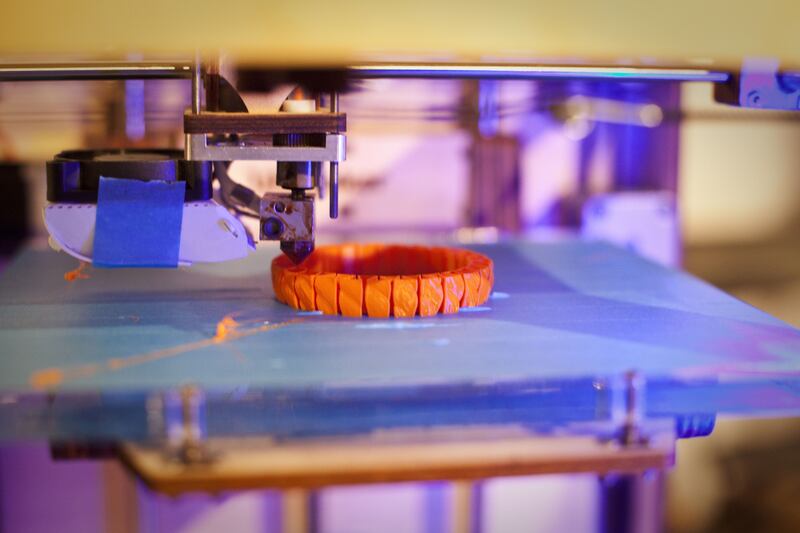Four days after the deadly school shooting in Newtown, Conn., Cody Wilson was testing out the latest version of a high-tech 3-D printer he helped design. Its sole purpose: to make it fast and easy to make your own gun.

Wilson’s Texas-based startup is called Defense Distributed, and while other companies are working to make things like bracelets and prosthetic limbs with 3-D printers, this one is focused on firearms. Later that same day, Wilson posted a video on YouTube showing three shots being fired from an AR-15 rifle, the same gun Adam Lanza allegedly used to slaughter 20 children and six adults at Sandy Hook Elementary School. The rifle was partially built using a 3-D printer that Defense Distributed hopes it can one day sell directly to consumers for $500 to $1,000—less than the cost of a new iMac.
That the debate over gun control has appeared to transform practically overnight, with even long-time gun-rights advocates tilting leftward—is not lost on Wilson. “Even I can understand we might want to sit on our results right now,” he told The Daily Beast. “This is not the best time to come out guns blazing.”
But the new printer might be years away from going to market, and Wilson says he’s not changing course. He’s “very impressed” with new versions of the weapons that Defense Distributed has built and believes the guns can sustain 50 rounds of ammunition at a time.
Despite a spate of recent mass shootings, the little-known DIY gun movement perseveres. The printed elements are typically constructed from layers of plastic resin produced by the printer that are then adhered together and combined with metal cartridges and ammunition.
Michael Guslick, an engineer in Wisconsin, has kept an extensive account of his attempts at “gunsmithing with a 3-D printer” on his blog. Guslick chronicles his experiments with different types of resins and plastics and offers advice to his fellow gunsmiths such as “always test unproven systems with a single round to begin with.”
To gun-control advocates, it might be terrifying to imagine a world where anyone can print a gun at home without going through a background check or registering a weapon. To Wilson, that possibility is exciting and an intrinsic part of the project. “I can’t control what someone will do,” Wilson says, citing civil libertarianism and Foucauldian principles of anarchism as partial inspirations.
Josh Horwitz, the executive director of the Coalition to Stop Gun Violence, isn’t amused. “The intent seems to be nameless, faceless firearms for people who want to counter the supposed tyranny of government,” Horwitz says. “One person’s tyranny is another person’s health care. I have no faith that Cody Wilson can tell the difference.”
But 3-D gun developers and their gun-control rivals agree that the day a functional gun is built from a 3-D printer is still far off. “I’m not saying it’s a public-safety threat today,” says Horwitz, “but in a year or five years, maybe. It’s problematic.”
Wilson won’t say how far out his printer is from production, but thinks a year is optimistic. “It assumes so much progress,” he says.That progress may be stalled by forces outside Wilson’s control, as pressure to implement strong gun-control laws mounts after the Newtown massacre.On Tuesday, Thingiverse, a website that hosts digital downloads to create objects, was in the process of removing files uploaded by Wilson and his 3-D-gunsmithing peers used to create weapons. A spokeswoman for Thingiverse declined to comment on whether the company has changed or reinforced its policies since Newtown and instead directed The Daily Beast to a clause in its terms of service stating that “users agree” not to use Thingiverse “to collect, upload, transmit, display, or distribute any User Content that ... promotes illegal activities or contributes to the creation of weapons, illegal materials or is otherwise objectionable.”Wilson, a second-year law student at the University of Texas who just finished a course on corporation law, says he knows there may be bigger complications down the road if the printed 3-D gun becomes a viable object. “Someone is always going to sue you regardless,” he said. “But that’s to come.”






